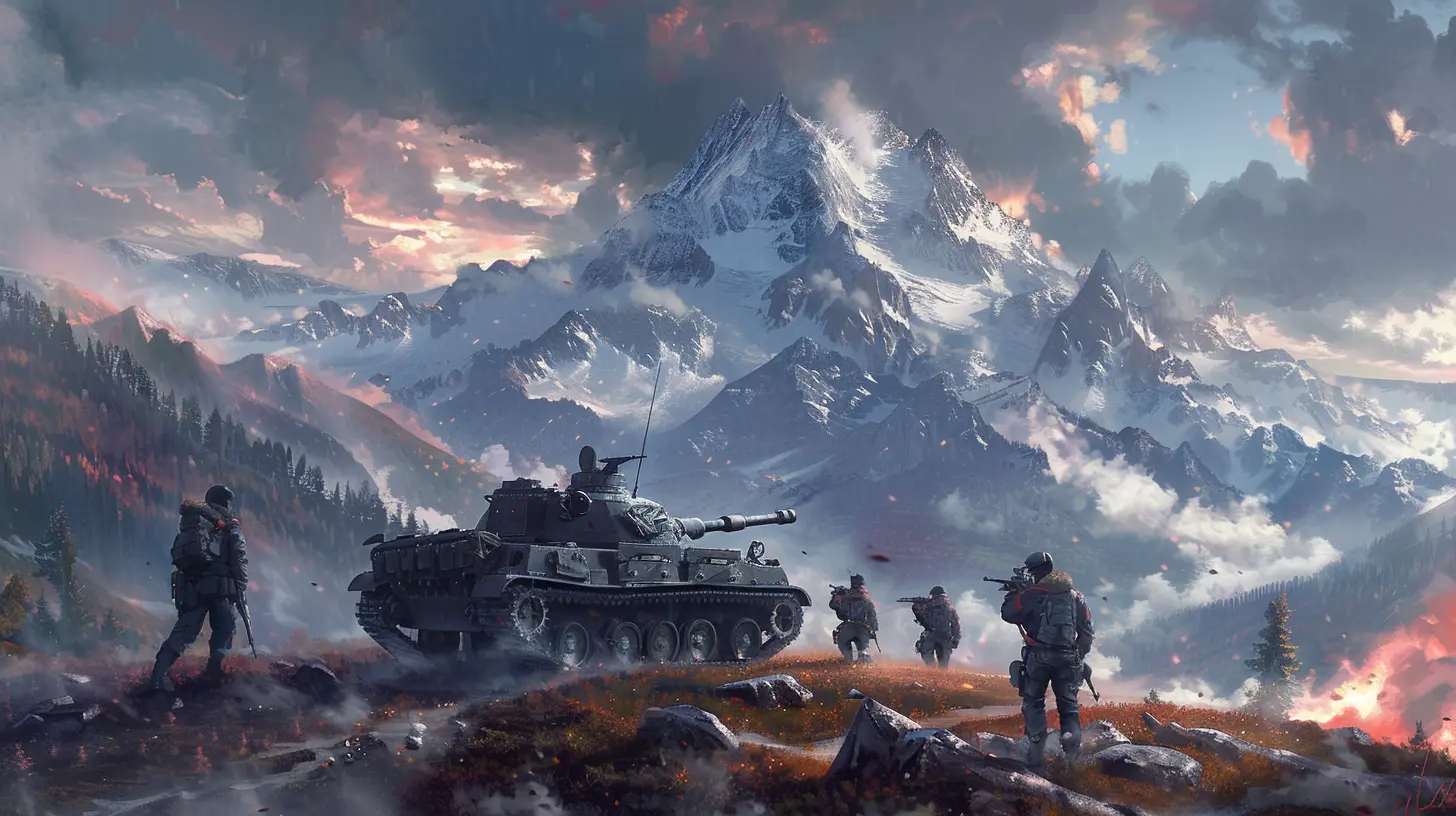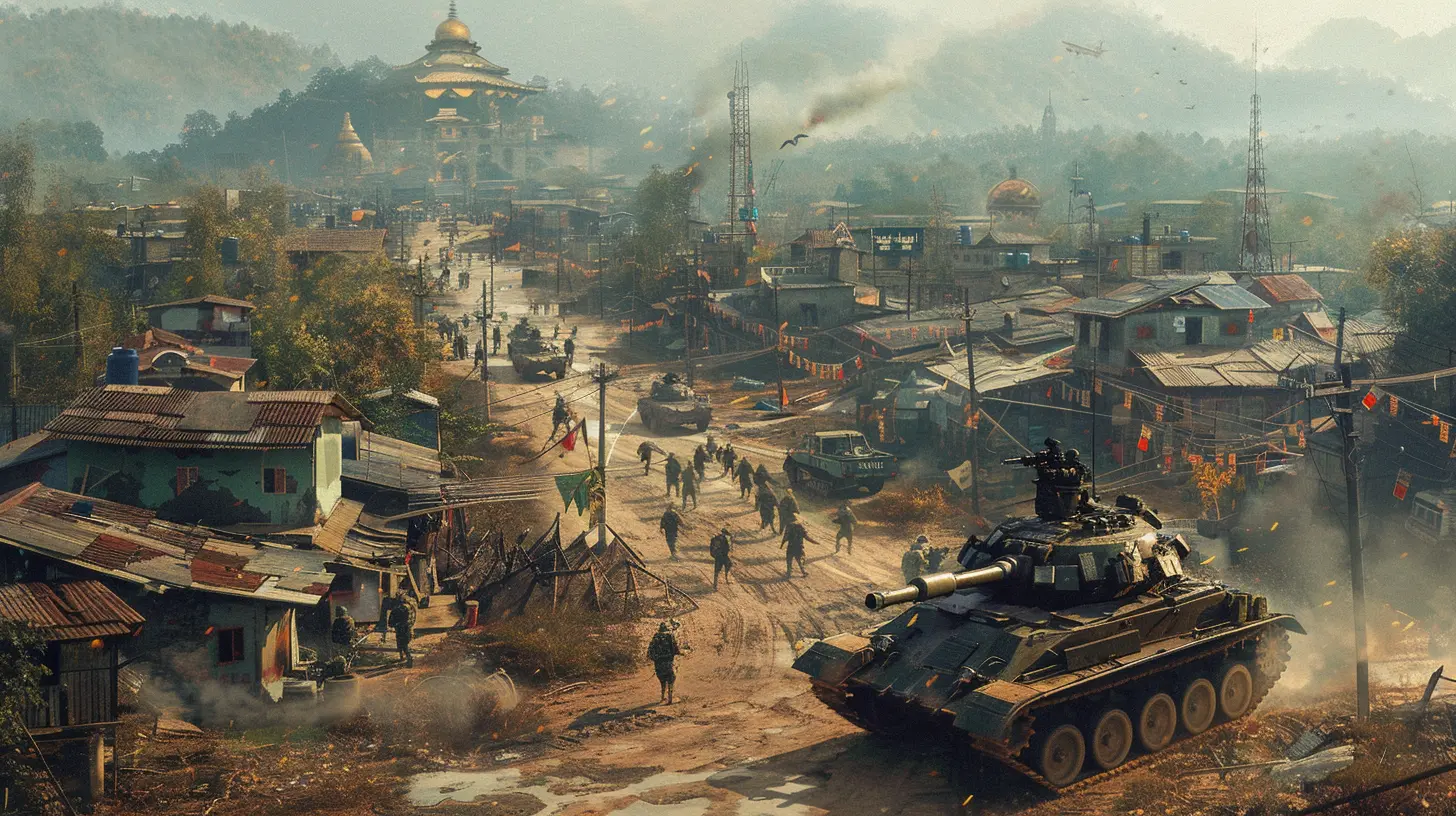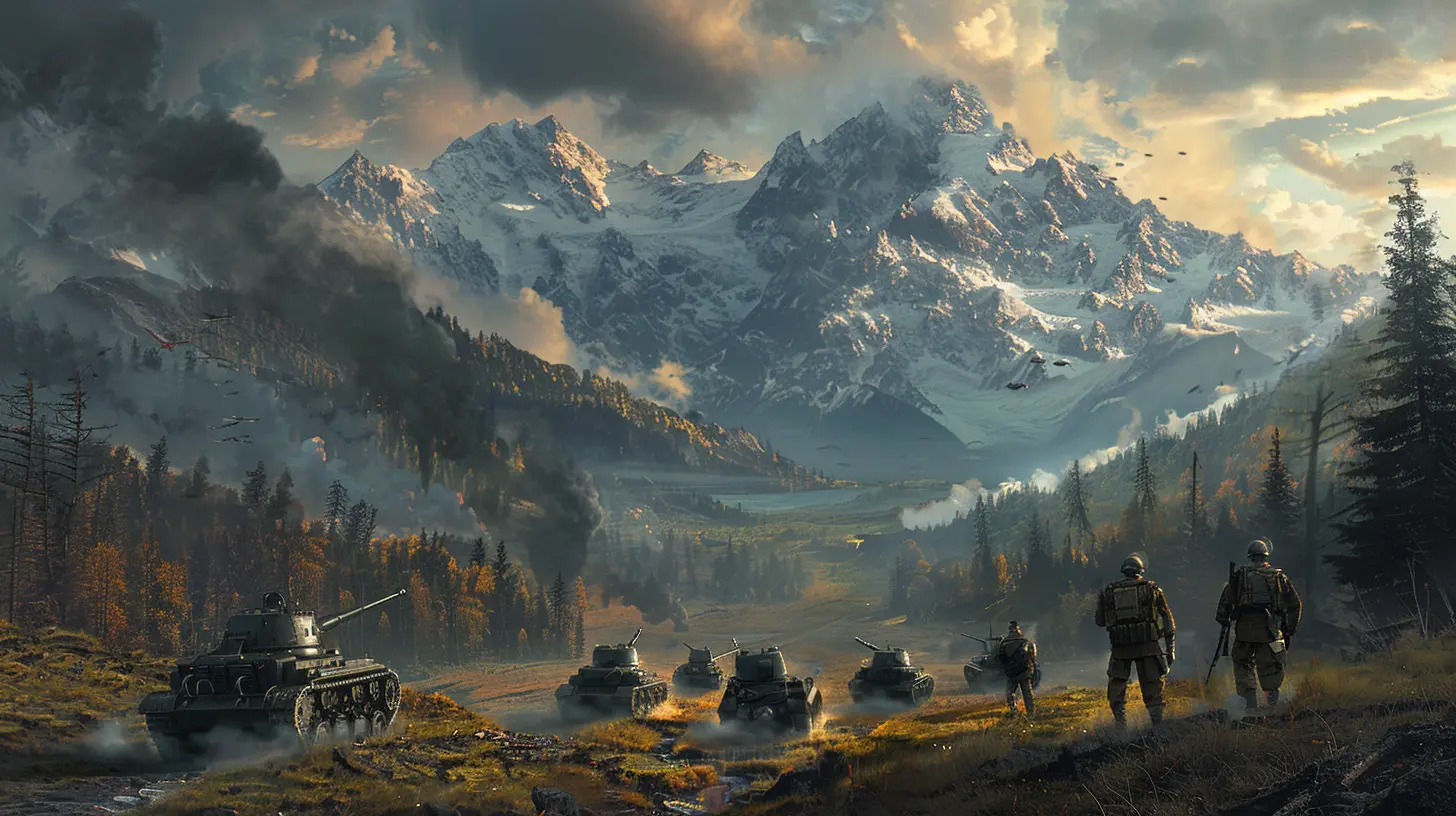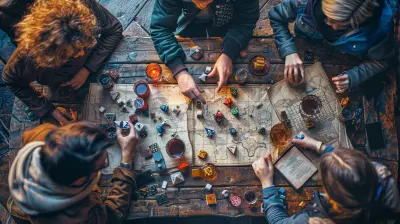How to Conduct Guerrilla Warfare in Strategy Games
21 June 2025
So, you want to be the fox in the forest, the shadow that strikes and fades before anyone knows what hit them? Welcome to the art of guerrilla warfare in strategy games—a playstyle for the bold, the cunning, and those who love a good underdog story. If you’re tired of head-on clashes and building massive armies just to get steamrolled, this guide is your tactical bible.
Let’s break down how you can turn chaos into your greatest ally while gaming smarter, not harder.
What Is Guerrilla Warfare in Strategy Games?
Before we dive into the tactics, let's get one thing clear—guerrilla warfare is all about mobility, deception, and unpredictability. Think of it as playing hide-and-seek with explosives. 🔥In most strategy games, whether it’s real-time or turn-based, guerrilla tactics involve:
- Harassing the enemy’s economy
- Picking off isolated units
- Avoiding direct confrontation
- Using terrain to your advantage
- Staying two steps ahead
This strategy works especially well when you're the underdog or if you're using a faction with fast units and stealth mechanics. It’s not about brute strength—it’s about clever moves and surgical strikes.
When Should You Use Guerrilla Warfare?
Guerrilla warfare isn’t always the best option, but in certain situations, it can turn the tide dramatically. You should seriously consider this strategy when:- You're outnumbered or outgunned
- Your opponent has stronger units or tech
- You’re playing on a map with lots of terrain cover or choke points
- You're behind and need to stall the enemy’s progress
- You want to mess with your opponent (admit it, we all do)
Using guerrilla tactics is like picking a lock; it requires patience, the right tools, and a good understanding of the mechanics. If done right, you’ll have your opponent pulling their hair out in frustration.
Picking the Right Faction or Units
Not all units are made for hit-and-run tactics. If you’re planning on going full guerrilla, you need the right tools for the job. Look for:1. Fast Movers
Units with high mobility are your bread and butter. You want to get in, smash something important, and vanish before the enemy can respond.- Think cavalry in medieval games
- Light vehicles in modern settings
- Stealthy aliens in sci-fi titles
2. Stealth Units
Some strategy games let you literally disappear from the mini-map. Use that.- Assassins
- Cloaked units
- Submarines for naval warfare
3. Ranged Specialists
Long-range attacks let you kite enemies—poke them with a stick and run like hell.
Know the Map Like the Back of Your Hand
Want to win as a guerrilla? Become a freaking cartographer. 🗺️ The more you know the map, the better you can:- Use chokepoints to ambush
- Set traps near resource zones
- Escape using hidden paths
- Avoid areas where the enemy is strong
Pro tip: Always scout early and often. Information is power, especially when you're not relying on brute force.
Hit the Enemy Where It Hurts
Guerrilla warfare is psychological as much as it is physical. Your goal isn’t to kill every enemy unit—it’s to break their rhythm, slow them down, and force bad decisions.Here’s where you should hit:
🔋 Resource Lines
Attack workers, supply depots, mining sites—anything that fuels their economy. Starve them out.🔧 Infrastructure
Strike at tech buildings, production centers, or anything that takes time to rebuild. It’s like knocking the batteries out of a flashlight in a horror movie.🚶 Isolated Units
Catch them when they’re alone. Never fight fair, remember?🏕️ Forward Bases
If they’re expanding, delay it. Crush their ambitions before they root in.Use Hit-and-Run Tactics Like a Pro
You’ve probably heard this a million times: "Hit-and-run." But let’s dig deeper—you're going for strike-and-vanish with style.Step-by-Step
1. Identify a soft target (e.g., unguarded worker units)2. Send in a small, fast unit group
3. Deal quick damage—destroy, disable, or disrupt
4. Retreat immediately—don’t stick around for applause
5. Rinse and repeat in a different location
It’s like being a mosquito at a barbecue. Annoying, elusive, lethal in numbers.
Master the Art of Ambush
Ambushes can win you fights you have no business winning. Choose a narrow pass or a fog-covered forest. Then, lie in wait.When the enemy steps in—BOOM. Surprise attack, high damage, and they’ll think twice before chasing you into unknown territory again.
Want to really mess with their head? Set traps in areas you know they’ll try to reclaim. It’s like planting landmines in their comfort zone.
Keep Moving—Never Get Caught
Mobility is everything. The moment you stop, you become a target.Make sure you:
- Rotate harassment targets constantly
- Split your units into multiple hit squads
- Avoid clumping in one area
- Always have an escape route planned
If an engagement isn't going your way, don't gamble. Just dip out and live to strike another day.
Psychological Warfare: Mess With Their Head
Guerrilla tactics aren’t just about mechanics—it’s about tilting your opponent.If you’re constantly poking their bases, cutting off supply lines, and appearing where you shouldn’t, they’ll start panicking. And a panicked player is a sloppy player.
You’ll notice:
- They overbuild defenses in random spots
- Spread their forces too thin
- Abandon key zones
- Rage in the chat (that’s a win!)
Defending Against Guerrilla Warfare
Maybe the tables have turned, and someone is using guerrilla tactics against you. Here’s how to counter it:- Build detection units to uncover stealth threats
- Place turrets or towers in key resource areas
- Keep mobile defense units on patrol
- Use scouting drones or troops to monitor flanks
- Stay calm: Don’t abandon your strategy chasing phantoms
Guerrilla warfare is high-risk. If you stay disciplined and close up gaps, it becomes much harder for them to thrive.
Game Examples That Reward Guerrilla Tactics
Let’s be real—some strategy games just scream “guerrilla warfare.” Here are a few notable mentions:🌍 StarCraft II
Zerglings, Baneling bombs, Mutalisk fly-bys—Zerg is basically the guerrilla faction of sci-fi strategy.⚔️ Age of Empires Series
Scout cavalry, hit-and-run archers, and wolf luring—yes, even nature can be your trap.🛡️ Total War Series
Use agents and light cavalry to raid supply lines, sabotage buildings, and force forced marches into ambushes.🛸 XCOM Series
Use cover, overwatch, stealth units, and flanks to control the turn-based battlefield like a ghostly puppeteer.Common Mistakes to Avoid
Even guerrilla masters can slip up. Avoid these rookie errors:- Overcommitting: One ambush can become a massacre if you stay too long.
- Ignoring intel: Don’t attack blind—scout first.
- Neglecting your own economy: Guerrilla warfare doesn't mean ignoring your base.
- Getting predictable: Always change your approach; patterns get punished.
- Forgetting upgrades: A faster raider is only scary if it can actually hurt something.
Final Thoughts
Guerrilla warfare is both an art and a science. It’s for those who want to control the game’s tempo, outthink their foes, and turn weaknesses into weapons.With the right mindset, tools, and tactics, you can become the bane of every overconfident enemy who thinks bigger is always better. So go out there and be the ninja they never see coming.
And remember: Don't fight harder—fight smarter.
all images in this post were generated using AI tools
Category:
Strategy GamesAuthor:

Emery Larsen
Discussion
rate this article
2 comments
Aisha Webster
Great insights! I particularly liked your tips on using terrain to your advantage. Adding examples from popular strategy games could further illustrate your points and help readers apply these tactics effectively. Keep up the good work!
September 6, 2025 at 4:22 AM

Emery Larsen
Thank you for the feedback! I appreciate your suggestion and will consider adding examples from popular strategy games in future updates.
Misty Rodriguez
Master the element of surprise; patience and stealth are your greatest allies.
June 24, 2025 at 4:16 PM

Emery Larsen
Absolutely! Patience and stealth can turn the tide in guerrilla warfare, allowing you to outmaneuver your opponents and strike when they least expect it.


